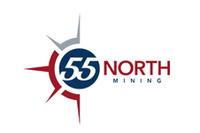Gold prices traditionally rally off the summer lows in September as many players come back to the market. And if this year holds true to that seasonality, next month might turn out to be “a good September.”
By Melissa Pistilli—Exclusive to Gold Investing News
After a slight dip on profit-taking and a brief pause in trading action, COMEX gold prices climbed to a 7-week high of $1233.90 an ounce in mid-session Wednesday. Posting a third straight day of gains, the yellow metal closed at $1230.50 an ounce in New York.Tuesday, SPDR Gold Trust (NYSE:GLD), the top gold-backed ETF fund, reported its first rise in holdings in nearly a week, from 1,286 metric tons to 1,294 metric tons.
The Fear Factor has returned to the gold market this week as a drop in global equity markets and ongoing concerns over global economic health reawakened safe haven sentiments.
“With gold prices managing to forge higher in the face of a weakening global economic outlook and a weaker US Dollar, it would appear that the flight to quality crowd is back on its feet again,” commented Jaime Greenough, Futures Representative at Global Securities, in a note Tuesday.
Deflation vs. Inflation
The big debate amongst gold market analysts recently revolves around the diverging possibilities of deflation and inflation. Those in the inflationist camp see the quantitative easing measures of recession-gripped governments such as the US as naturally leading to the serious devaluation of currencies (such as the dollar) and eventually skyrocketing inflation. Others argue that deflation is a much more likely scenario, and in fact, may already be taking shape. The fear of gold investors in a deflationary environment is that many will rush to liquidate assets, including gold, for cash, bringing down the yellow metal’s price significantly.
As for signals that inflation is rolling this way, inflationists this week pointed to wholesale producer prices increasing for the first time since April and reports that hedge fund Eton Park Capital Management staked a rather large position, about 6.6 million shares, in SPDR Gold Trust ETF in June.
However, those holding the contrary opinion tried to burst the gold bug bubble this week, including MarketWatch columnist Nick Godt and The Wall Street Journal’s Brett Arends.
Despite all the attention given to the threat of inflation, “the bond market, the ultimate barometer of such things, has been telling another story,” quips Godt. “Yields on benchmark 10-year Treasurys, which rise along with inflation expectations as bond prices drop, did rise Tuesday. But the move comes after yields on Treasurys Monday slumped to their lowest level since at least April 2009, just about when hedge funds and conservative pundits began to warn about deficits and inflation.”
According to Godt, concerns of slow growth in the US economy and the rising risk of deflation is what prompted the Fed to buy bonds on Tuesday. He also points out that while Eton Park may have “boosted its holdings,” one of the world’s largest hedge funds and the largest holder of the SPDR Gold Trust, Paulson & Co., has left its stake in the ETF unchanged since March at 31.5 million shares.
“You’ll hear plenty of voices on Wall Street telling you there’s no serious chance of deflation,” says WSJ columnist Brett Arends, who is not impressed by the arguments used to deny the risk of deflation. “Trouble is, they have a terrible track record of predicting these big, paradigm shifts. Over the past decade, few predicted the bear market, the housing collapse or the financial crisis. Their assurances need to be taken with a fistful of salt.”
Arends cites some distressing labor and housing statistics as signs that “deflation may already be here.” Consumer prices haven’t moved since May, hourly wages have fallen 0.7 percent, with a 2 percent drop in the manufacturing sector, from Q1 to Q2, and housing prices have “been steeped in deflation for years.” While other numbers, such as the Federal Reserve Bank of Cleveland’s median inflation index shows underlying inflation near zero.
Fall Season Just Around the Corner
For now, the outlook for gold going into the 4Q 2010 remains positive with many analysts calling for prices well into the $1300 an ounce range.
The Hindu festival of Raksha Bandhan on August 24th will usher in the buying season in India, the world’s leading gold consumer. Gold prices traditionally rally off the summer lows in September as many players come back to the market. And if this year holds true to that seasonality, says Mineweb’s Laurence Williams, “we could expect to see gold’s high point for the year threatened and surpassed” in what might turn out to be “a good September.”
The Street’s Alix Steel notes that prices for the precious metal have “historically [risen] as much as 2.5 [percent] in September, which would push prices towards their intraday high of $1,264 an ounce.”
Matt Zeman, an analyst at LaSalle Futures Group in Chicago, anticipates gold climbing to fresh highs over the upcoming weeks, all that’s needed is more gloomy global economic reports, which shouldn’t be too much of a stretch.
Ashraf Laidi, chief market strategist at CMC Markets, pegs gold at $1,330 an ounce by the middle of the 4Q on rising economic woes, further quantitative easing measures, lower risk appetite, and escalating tensions in the Middle East.
Despite these positive forecasts, some see little real support for higher gold prices. “As long as you see continued U.S. dollar strength I think gold will remain in a corrective/consolidated phase,” says Atyant Capital managing director, Pratik Sharma, who anticipates the yellow metal remaining rangebound between $1,160 and $1,250 an ounce over the coming months.





